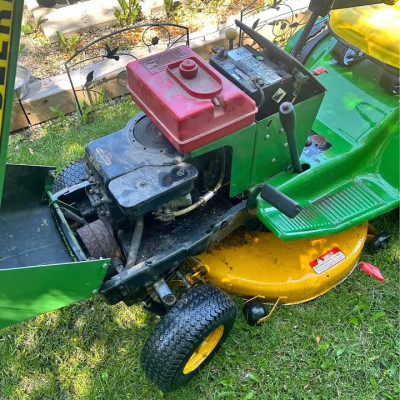Gardening Tips & Tricks: Elevate Your Green Thumb
Gardening is a wonderful way to connect with nature, grow your own food, and create a beautiful outdoor space. Whether you're a seasoned gardener or just starting out, there are always new techniques and tricks to enhance your gardening experience. Here’s a collection of gardening tips and tricks to help you get the most out of your garden:
1. Start with Good Soil
Healthy plants begin with healthy soil. Invest in quality compost or organic matter to enrich your soil. Regularly test your soil’s pH and nutrient levels to ensure it meets your plants’ needs. Good soil promotes robust plant growth and reduces the likelihood of pests and diseases.
2. Water Wisely
Overwatering can be just as harmful as underwatering. Water your plants early in the morning to reduce evaporation and allow foliage to dry before evening. Use a drip irrigation system or soaker hoses to deliver water directly to the roots, minimizing waste and promoting deeper root growth.
3. Choose the Right Plants
Select plants that are well-suited to your climate and soil conditions. Native plants are often a good choice as they are adapted to local conditions and require less maintenance. Research the needs of each plant to ensure you provide the right environment for them to thrive.
4. Practice Companion Planting
Companion planting involves growing certain plants together to benefit each other. For example, marigolds can repel pests, while beans can fix nitrogen in the soil for other plants. Learn which plants make good companions to improve your garden’s health and productivity.
5. Use Mulch
Mulch helps retain soil moisture, suppress weeds, and improve soil quality as it decomposes. Organic mulches, such as wood chips or straw, can also add nutrients to the soil. Apply a layer of mulch around your plants, but avoid piling it up against the plant stems.
6. Prune Regularly
Pruning helps to shape plants, remove dead or diseased branches, and encourage new growth. Different plants have different pruning needs, so familiarize yourself with the best practices for each type. Regular pruning can enhance the overall health and appearance of your garden.
7. Attract Beneficial Insects
Insects like ladybugs, lacewings, and predatory beetles can help control pest populations naturally. Plant flowers such as dill, fennel, and cosmos to attract these beneficial insects. Avoid using broad-spectrum pesticides that can harm these helpful creatures.
8. Save Seeds
Saving seeds from your favorite plants can be a cost-effective way to grow your garden year after year. Allow your plants to mature and produce seeds, then collect and store them in a cool, dry place. Be sure to label your seeds to keep track of what you have.
9. Use Raised Beds
Raised garden beds can improve soil drainage and make gardening easier on your back. They warm up faster in the spring and can extend your growing season. You can also control the soil quality more easily in raised beds, which is especially beneficial for plants with specific soil needs.
10. Keep a Garden Journal
Documenting your gardening experiences can help you learn and improve over time. Record what you planted, when you planted it, and how it performed. Note any issues you encountered and how you addressed them. This information will be invaluable for planning future gardens.
11. Implement Vertical Gardening
If you’re short on space, vertical gardening can be a great solution. Use trellises, wall planters, or hanging baskets to grow plants upwards rather than outwards. This technique maximizes space and can add a unique aesthetic to your garden.
12. Stay Patient and Observant
Gardening is a process that requires patience. Plants take time to grow and flourish, so don’t get discouraged by setbacks. Regularly observe your garden for signs of pests, diseases, and plant health issues, and address problems promptly.
With these tips and tricks, you’ll be well on your way to a thriving and beautiful garden. Happy gardening






